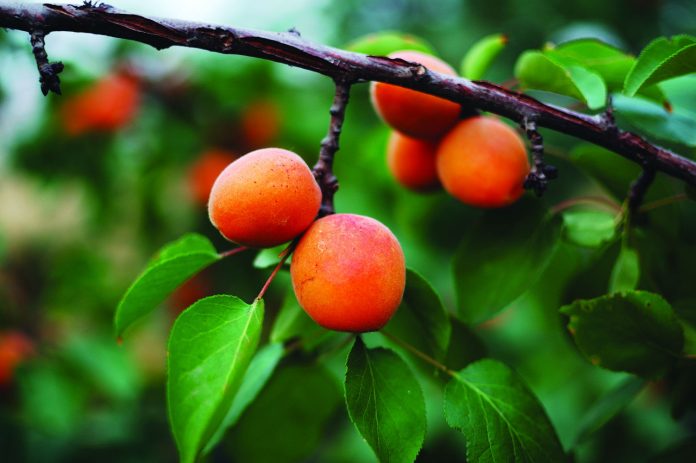
<
One of the best things about gardening in Santa Clara County is that, no matter how big your garden or how long you’ve been doing it, you get the sense that we’re all in it together. A heat wave can wilt a single patio garden tomato as easily a 100-foot row of lettuce. Aphids don’t care if you’ve been gardening for 30 years or just planted kale for the first time with your fingers crossed. They will find you! And so it goes with fruit trees when spring rolls around. Whether you have acres of orchards or a lone apricot in the backyard, it’s time to start thinking about thinning your fruit.
<
If you aren’t yet familiar with the concept of thinning fruit, here’s a quick primer. Fruit thinning means removing excess fruit when they are between ½ inch and 1 inch in diameter. It is easiest to do this by hand, gently twisting the fruit or cutting it off with pruners. All stone fruit (peaches, apricots, nectarines, plums, etc.) require thinning. Apples and Asian and European pears do as well.
<
There is usually no need to thin citrus, cherries, figs, persimmons, pomegranates or nuts. Stone fruit should be thinned to 2 to 4 inches apart on each branch. However, peaches and nectarines should be thinned to 3 to 5 inches. When it comes to apples and pears, which produce fruit in clusters, you should thin fruit to no more than one or two of the largest fruit per cluster. You’ll be up close and personal with your fruit when you do this, so take the opportunity to remove any damaged or disfigured fruit as well.
<
You may be inclined to approach this task with a light hand, perhaps even feeling bad for that little fruit. After all, baby peaches are pretty cute. But leaving too much fruit on the tree will only create problems later. All those tiny peaches grow up to be big peaches, which can add a lot of weight to your carefully-pruned tree. Fruit trees typically set much more fruit than they can support which can be a drain on the tree’s stored energy and even cause it to bear fruit every other year (alternate bearing cycle.) By thinning the fruit, you help to prevent these problems and maximize the size of the fruit you leave on the tree!
<
If this sounds like a lot of work, don’t worry. Mother Nature is here to help. During “June drop” (which often happens in May around here) fruit and nut trees naturally thin themselves a bit. So there’s nothing wrong with your apple tree if it sheds crop of immature fruit. And all your efforts will be rewarded when you finally take a bite of that ripe, juicy peach!
<
For more information, check out Home Orchard: Growing Your Own Deciduous Fruit and Nut Trees by C. Ingels, P.Geisel, M. Norton http://homeorchard.ucdavis.edu/8047.pdf
Cayce Hill is a Santa Clara County Master Gardener. Call the group’s hotline at (408) 282-3105, Monday through Friday from 9:30 a.m. to 12:30 p.m., or visit https://www.mastergardeners.org/ask-a-question for help with your garden problems.








